#Manpuku-ji
Explore tagged Tumblr posts
Text

On September 7, 2003, Sarah performed in Otobutai in front of the Manpuku-ji temple in Kyoto, Japan. Other performers at that year's Otobutai included Yundi Li, Jiang Xiao-Qing and the Ko-be Overseas Chinese Association.
0 notes
Photo

Statue of Hotei (布袋) in the Ten'nō-dono of Manpuku-ji (萬福寺) in Uji City, Kyoto-Japan.
38 notes
·
View notes
Text
ランタン祭(萬福寺) la fete de la lanterne a Manpuku temple (2022.11)
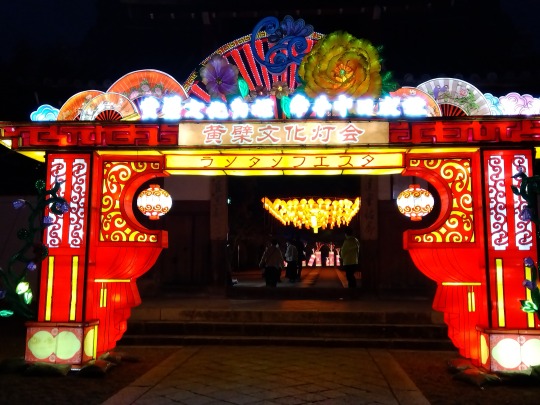
黄檗寺のランタンフェスタに行ってきました!
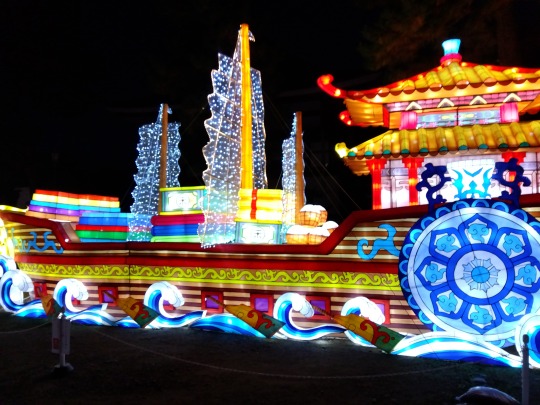
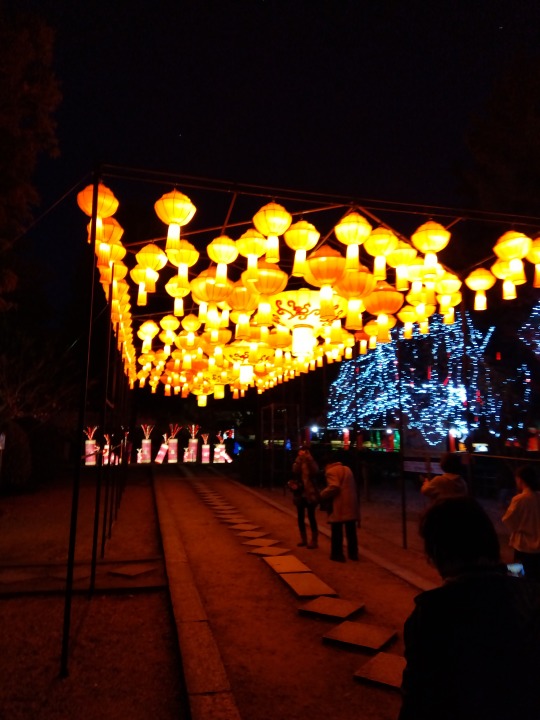
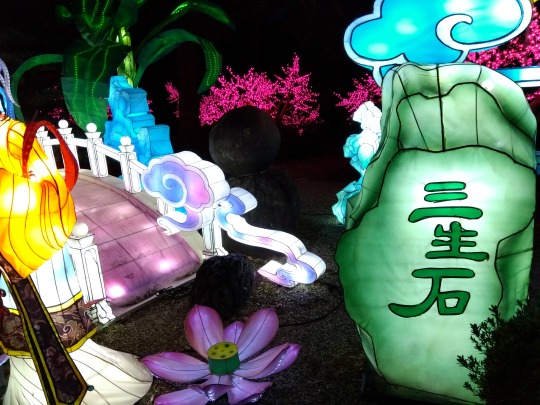
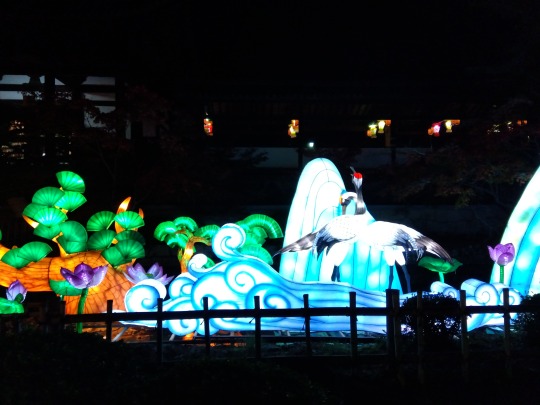
見ごたえありまくり。1月31日までです!!
0 notes
Video
Manpuku-ji Temple 黄檗山萬福寺 por Patrick Vierthaler Por Flickr: Head Temple of the Ôbaku Zen-School of Japanese Buddhism. This major school came to Japan very late in 1661. It's temple show a completely different style - that of Ming China - than the more famous temples of Japanese Rinzai and Soutou schools (Tang and Song China) of Zen-Buddhism.
#Japan#JPN#Kansai#Kyoto#Kioto#Uji#Oubaku#Obaku#Oubaku-shu#School#Zen#Buddhism#Manpuku-ji#Manpuku#Temple#Buddhist#Buddhistischer#Tempel#日本#関西#京都#宇治#満福寺#黄檗宗#黄檗山#黄檗山満福寺#禅#仏教#お寺#寺院
6 notes
·
View notes
Photo
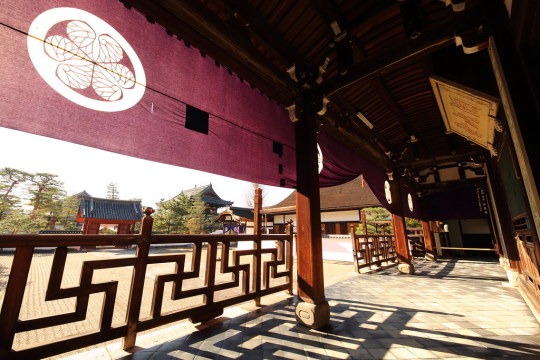
OBAKU-SAN MANPUKU-JI by Teruhide Tomori on Flickr
13 notes
·
View notes
Video
OBAKU-SAN MANPUKU-JI by Teruhide Tomori Via Flickr: Obaku Syu head temple OBAKU-SAN MANPUKU-JI Gokashou Sanbanwari, Uji-shi, Kyoto pref. 黄檗宗大本山 萬福寺 / 京都府宇治市五ケ庄三番割34
#黄檗宗#黄檗山#萬福寺#宇治#日本#京都#仏教#伝統文化#伝統建築#architecture#construction#Japan#Japon#Uji#Obaku-san Manpuku-ji#temple#Kyoto#tradition#wooden architecture#Buddhism#photography
2 notes
·
View notes
Text
Zen Buddhism in Japan
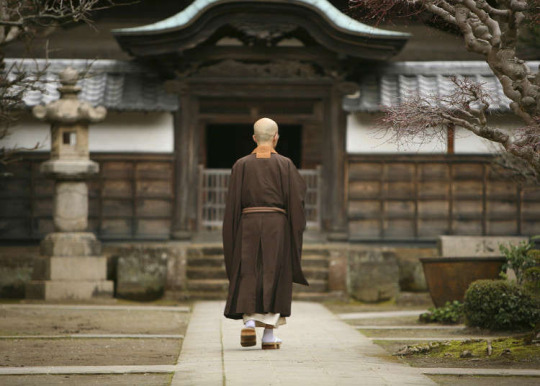
Three Main Schools of Zen
There are three main traditional schools of Zen in Japan, each with its own background and specificities. The Soto Sect Soto is the largest of the sects. Historically practiced by the lower classes, artists, and poets, the Soto sect emphasizes the practice of sitting meditation known as zazen. Practitioners face a wall or a curtain during this meditation. The Rinzai School Traditionally practiced by the samurai caste, the Rinzai School include the presence of Koan, a kind of short and paradoxical sentence that cannot be solved intellectually. However, those are usually introduced only after good posture and concentration were achieved during the seated meditation. The Obaku Sect The smallest of the sects, the Obaku sect was formed by a small group made up of Buddhist masters from China and Japanese students at the Manpuku Temple (Manpuku-ji). To this day, those in the Obaku sect continue to chant sutras in the Chinese language.
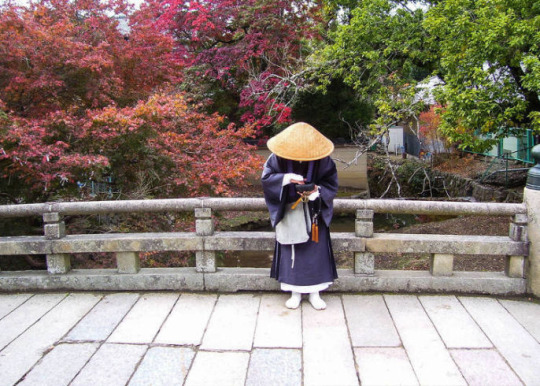
[Source]
77 notes
·
View notes
Photo
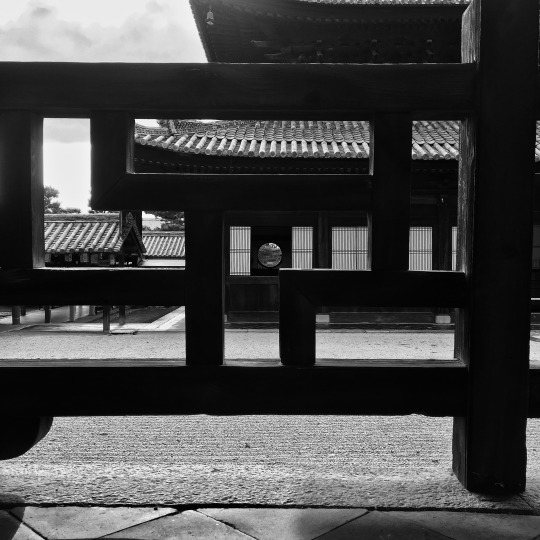
萬福寺 / Manpuku-ji
2 notes
·
View notes
Photo

Manpuku-ji Temple was established in 1654 by monks who traveled all the way from China. Various aspects of the temples were built in a Chinese style, such as the temple exterior and the Buddhist statues, so it's distinguished by its characteristic atmosphere that's slightly different from other Japanese temples.
2 notes
·
View notes
Photo

Manpuku-Ji 2 . . #tokyo #japon #japan #東京 #iphone11pro#日本 #夏 #suppaiku #pictureoftheday #instacolor #instageek #youmademyday #10likes #instadaily #feelgood #gay #withiphon #summer #shotoniphone #blog #blogger #été #photoblog #sumidaku #墨田区 #萬福寺 #向島 https://www.instagram.com/p/CgHfvcFhV-s/?igshid=NGJjMDIxMWI=
#tokyo#japon#japan#東京#iphone11pro#日本#夏#suppaiku#pictureoftheday#instacolor#instageek#youmademyday#10likes#instadaily#feelgood#gay#withiphon#summer#shotoniphone#blog#blogger#été#photoblog#sumidaku#墨田区#萬福寺#向島
0 notes
Photo
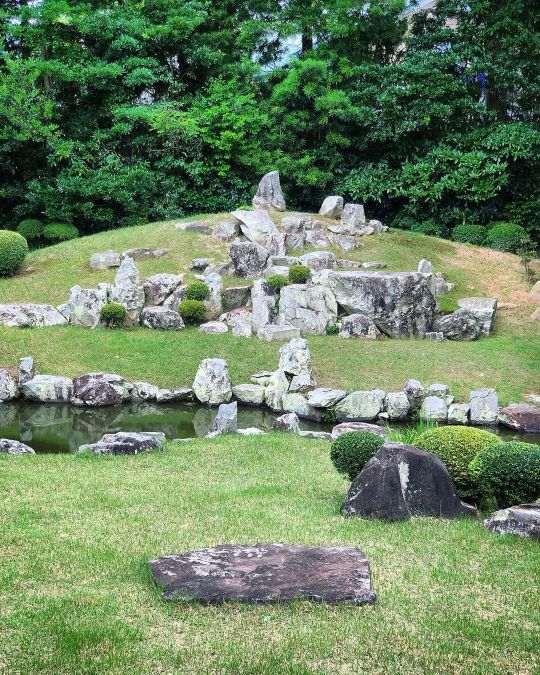
📸萬福寺庭園 [ 島根県益田市 ] ② Manpuku-ji Temple Garden, Masuda, Shimane ーー南北朝時代の本堂が残る益田屈指の古寺に、水墨画家 #雪舟 が作庭した“雪舟四大庭園”の一つ。国指定名勝。 ...... 続き。本堂・書院の裏に雪舟により作庭された池泉鑑賞式庭園が残ります。これは『医光寺庭園』と同じく1479年(文明11年)に15代目益田城主・益田兼尭に招かれた際に造られたもの。 . 背後の山の斜面を活かした医光寺庭園とはまた異なり、比較的平坦(背後は緩やかな斜面)な場に築山をもうけた明るい築山泉水式庭園。 . 仏教の世界観、“須弥山世界”を表現したもので、書院から正面に見た時の頂点に立つ石が須弥山石⛰心字池を向かって右手側に枯滝石組、そして左手側に注水口や三尊石の姿が見られます。 書院手前の平たい岩がこの庭園を拝む為の礼拝石。 . とかまあ、仏教の世界🙏に見立てた造形的な庭園ではあるんだけど、個人的にはあまり難しい事を考えずにぼーっと眺めていたいお庭。 . 近代には文豪・島崎藤村も訪れ自らの著書にその記を残しました。その他にも鎌倉時代の作『絹本著色二河白道図』🖼も国指定重要文化財、県指定文化財となっている仏像・阿弥陀如来立像などを拝観することができます。 意外と住宅街の中にある歴史的寺院、末永く地元の方の誇りであって欲しい庭園。 ・・・・・・・・ 🔗おにわさん紹介記事: https://oniwa.garden/manpuku-ji-temple-garden-%e8%90%ac%e7%a6%8f%e5%af%ba%e5%ba%ad%e5%9c%92/ ーーーーーーーー #zengarden #japanesegarden #japanesegardens #jardinjaponais #japanischergarten #jardinjapones #jardimjapones #японскийсад #japanarchitecture #japanesearchitecture #gardendesign #japanlandscape #日本庭園 #庭園 #庭院 #庭园 #sesshu #建築デザイン #益田 #masuda #国指定名勝 #国指定重要文化財 #おにわさん #oniwasan (萬福寺 雪舟庭園) https://www.instagram.com/p/CVPEbhQPgA6/?utm_medium=tumblr
#雪舟#zengarden#japanesegarden#japanesegardens#jardinjaponais#japanischergarten#jardinjapones#jardimjapones#японскийсад#japanarchitecture#japanesearchitecture#gardendesign#japanlandscape#日本庭園#庭園#庭院#庭园#sesshu#建築デザイン#益田#masuda#国指定名勝#国指定重要文化財#おにわさん#oniwasan
0 notes
Photo

One of the many Halls of Manpuku-ji (萬福寺) in Uji City, Kyoto-Japan.
22 notes
·
View notes
Photo
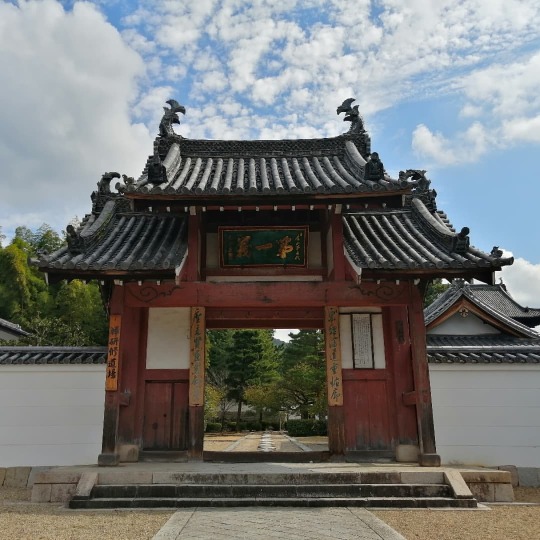
Entrance gate to Manpuku-ji #manpukuji #manpukujitemple #oubaku #obaku #obakuzen #zen #uji #temple #templegate #weekendgetaway (at 黄檗山萬福寺) https://www.instagram.com/p/CU2F-zGvUfU/?utm_medium=tumblr
0 notes
Text
TOURISM PRODUCTS AND SERVICES
CAPSULE HOTEL

Capsule Hotels originally developed in Japan, they call it ‘Kapseru Hoteru” or in the Western world it is known as a ���Pod Hotel’. It features a many small bed-sized rooms known as capsules, it is cheap, it accommodates more on the guests who does not want to spend or who cannot afford expensive convention hotels.
The first capsule hotel that was developed was made in 1979 and it was the ‘Capsule Inn Osaka’ that is located in Umeda District of Osaka and was designed by Kisho Kurokawa. From time to time it was spread through-out their country and was known in Belgium, China, Hong Kong, Iceland, India, Indonesia, and Poland.
A room in a capsule hotel is roughly the length and width of a single bed that has enough height for you to crawl in and sit up on the bed. The walls around you can be made with wood, metal or rigid material, but they are often built with fiberglass or plastic. The rooms are stacked side-by-side, they can have any units high but will provide steps or ladders that can give you an access to any levels. At the end of the room you will have a door that can be closed with a curtain or a solid door for you own privacy but it can only be locked from the inside.
The amenities of the hotel are mostly shared like their toilets, showers, wireless internet, and dining rooms. Some of capsule hotels have exclusive floors for women only and also separate elevators. When entering a capsule hotel your clothes and shoes are exchanged for a ‘yakuta’ and slippers, your luggage and valuable items are usually put in the lockers that are provided for you.

Hotel the Rock is located in Nishi Ward district of Osaka Japan. The people who are working in the hotel can communicate with you either in Japanese or English. Regarding the pandemic, they have extra health and safety measures that is implementing the safety features, physical distancing, cleanliness and disinfecting, and food & drink safety. With their facilities, they have a non-smoking room, air conditioning, heater, toiletries, microwave, ironing facilities, free Wi-Fi, 24-hour front desk, laundry, any type of pets is not allowed, TV area, trouser press, and free cancelation. You will have an option of picking between a 1 single bed or a 2 single bed that is a twin room, they also have a floor that is exclusively only for ladies.
One of the public transportations that you could use getting to the hotel are; Hommachi Station, Nishi-Ohashi Station, Yotsubashi Station. There are lot of places that you could go through while staying at the Hotel the Rock. Some of the top attractions are; OSTEC Exhibition Hall, Mitama Shrine, Wakoji Temple, and Manpuku-ji Temple.
Resources:
https://www.youtube.com/watch?v=s3Tx_R5U5Sc
https://www.youtube.com/watch?v=9b-HnLSDT7c
https://en.wikipedia.org/wiki/Capsule_hotel
https://www.booking.com/hotel/jp/the-rock.en-gb.html
0 notes
Text
Todo Heisuke - 2010 Japanese Wiki Entry
From the Japanese-English Bilingual Corpus of Wikipedia’s Kyoto Articles . This is a translation from Todo Heisuke’s Japanese wiki entry, exactly as it was in 2010. It is taken from PNM0086 in that collection.
For information on the database and how to use it, please check this post.
Just like English wikipedia, none of this information is guaranteed to be accurate. It’s not a current version of the Japanese article either.
Todo Heisuke’s article here is full of speculation and theories, organized a bit hap-hazardly. All the speculation is unsurprising, given the rumours of his birth and his early death, without any family to keep his memory green. The last section, titled “Existence Theory” should really be translated “Survival Theory.” It’s a far-fetched theory that Todo Heisuke actually survived and lived on, which of course is the sort of thing fiction like Hakuouki adopts.
The translated sentences used in this service contain English contents which are translated by the National Institute of Information and Communications Technology (NICT) from Japanese sentences on Wikipedia. My use of these translated sentences is licensed by the Creative Commons Attribution-Share-Alike License 3.0. Please refer to http://creativecommons.org/licenses/by-sa/3.0/ or http://alaginrc.nict.go.jp/WikiCorpus/ for details.
Heisuke TODO
Heisuke TODO (1844 - December 13, 1867) was a captain of the 8th troop of the Shinsengumi (special police). He later joined the breakaway Goryoeji (also known as the Kodaiji Party.) He seems to have been a single-minded youth who supported the sonno-joi (literally "Revere the Emperor, Expel the Barbarians") movement.
According to Mikisaburo SUZUKI, his comrade in the Goryoeji, Todo was of a typical Edo-ite and a motivated worker and there are several records showing that he was familiar with economics and had also mastered kenjutsu (he excelled in both academics and martial arts). In addition, since there is a description of him as 'misbehaved, but level-headed,' he may have been witty due to his Edo upbringing. As for his appearance, there is a record of a rumor that he was a short and handsome man.
Was he an illegitimate child of the Todo, Izumi no kami (military governor of Izumi)?
He was from Edo, Musashi Province. His formal name was Yoshitora. In Shinpachi NAGAKURA's "Doshi Renmeiki" (nominal list of the Shinsengumi) and in the "Fubungaki" (report of rumor), which was written when he was in Kyoto, Heisuke TODO is described as an illegitimate child of Takayuki TODO, the lord of Tsu Domain, Ise Province, but the truth is unknown.
It is also said that he was a son of Yakura TODO, a karo (high-ranking samurai) of Isehisai Domain, which was a branch of Tsu Domain, and that his alias 'Heisuke' derived from the name of a Todo family vassal.
One reason for this theory is that Todo's long-handled sword (naginata) was inscribed with the signature of the Todo family's in-house swordsmith, Kazusa no suke Kaneshige (according to "Aizu-hancho Shinsengumi goikko katana kai hikae"). Todo's sword was apparently high quality. But it is said to have been ruined in the fierce fighting of the Ikedaya Incident. However, given that a sword made by Kazusa no suke Kaneshige would have been expensive and not one which a mere ronin (masterless samurai) could have possessed, it is highly possible that he was an illegitimate child of the lord.
He is said to have been a certified practitioner of the Hokushin Itto school sword style.It is generally believed that he was a student at Chiba SHUSAKU's dojo, the Genbukan, but later his comrade in the Goryoeji, Washio KANO, said that he was a 'favored disciple of the Ito-dojo' operated by Kashitaro ITO in Fukagawa. However, the details are unknown since there are no detailed historical documents about the Ito-dojo. In any event, he dropped out of the dojo for unknown reasons before being granted a license.
Sakigake Sensei
As a so-called natural-born soldier from Isami KONDO's dojo, the Shieikan, he was a member of the Shinsengumi from its inception. He was a short, handsome and valiant man. He was a skilled swordsman, becoming known,along with Soji OKITA and Shinpachi NAGAKURA, as 'Kondo's Four Kings' and is said to have walked at the front during patrols.This appears to be the reason for his nickname, Sakigake (literally one who charges ahead) Sensei.
Although he was good-mannered, his behavior was inappropriate. When he was in the Goryoeji, he assumed the leadership of 300 vigilantes. He seems to have been warned about his behavior by Kondo since he was a student at the Shieikan, and there is a description that Kondo gradually kept the ill-behaved Todo at a distance.
There are no historical documents showing any remarkable activity while he was in the Shinsengumi. Todo may have attended to visitors or done clerical work in the office because he seems to have learned etiquette at the Hokushin Itto school dojo, where relationships between superiors and inferiors were strict.
During the Ikedaya Incident, he was slashed in the forehead when he carelessly removed his hachigane (helmet). Until then, he had been fighting so bravely that his sword was ruined, the junction of its blade with the guard being irreparably cracked. After the incident, and following Isami KONDO and Toshizo HIJIKATA, he was given reward money by the Shogunate (he is said to have hesitated to receive the money).
In November 1864, the Shinsengumi recruited new members in Edo on a large scale. Prior to that, Todo had gone to Edo to solicit candidates. Kano, who frequented the Ito-dojo at that time, said that Todo came to invite new members in early September. He seems to have associated with the master of this dojo, Taizo ITO (later Kashitaro ITO), for some time.
Goryoeji
When was the turning point in Todo's life? In February, 1865. Socho (general commander) Keisuke YAMANAMI, who had been in the Shinsengumi with Todo since its founding and who was a fellow disciple of Hojushin Itto school, deserted and committed seppuku. (Some people question whether Yamanami really deserted.) It is not known how this affected his life but, in March 1867, he left the Shinsengumi together with Kashitaro ITO in order to form the Goryoeji (Kodai-ji-to).
There are no explicit documents regarding his actions in 1866, but on the day of leaving the Shinsengumi, he seems to have been in Mino Province on business. It would appear that he met Yataro MIZUNO, a kyokaku in Mino, in order to lay the groundwork for the future since Mizuno was committed to support him by providing militia for the Goryoeji later. The Goryoeji seem to have joined up with other followers immediately after returning from Mino.
Also, no records about his activities in the Goryoeji exist. However, judging from the fact that Todo changed his name to 'Yashichiro NANBU (sometimes he identified himself as Yahachiro),' he may have been hiding because he was worried about the bad influence, caused by his reputation in the Shinsengumi, on his comrades' activity. The Goryoeji went campaigning in various places such as Ise and western areas, but there is no sign that Todo was involved. The only existing record is that he visited Yataro MIZUNO, a kyokaku in Mino and commanded 300 militiamen who were mainly bakuto (itinerant gamblers). On December 13, 1867, he was killed by the Shinsengumi in Aburanokoji (known as the Aburakoji Incident).
According to Shinpachi NAGAKURA ("Shinsengumi Tenmatsuki"), he heard Kondo saying, 'I'd like to keep Todo alive' (since this is an excerpt from a serialized newspaper article using posthumous discourse by a newspaper reporter in the late Meiji period, long after the Meiji Restoration, it is highly possible that this is a fictitious story) so he cleared the way and let Todo get away but Tsunesaburo MIURA, who was unaware of the situation, cut him down. (There is a different theory. According to the "Tenmatsuki," Miura felt such remorse for his actions in Aburanokoji that the wound made by Todo got worse, until sick in mind and body, he died but in the "Doshi Renmeiki" by Shinpachi NAGAKURA, he died near Osaka during the Boshin War.
According to the "Shinsengumi Shimatsuki" by Kan SHIMOZAWA, Todo understood Nagakura's intention, but he couldn't throw away his pride or abandon his comrades, so he fought against the Shinsengumi and was cut down by Tsunesaburo MIURA. Also, it is said that he was cut down from behind by Tsunesaburo MIURA when he understood Nagakura's intention and tried to leave. Therefore, there is a theory that Todo fought back until he died from the number of wounds.
According to the postmortem report, he was cut from the forehead to nose and the wound was approximately 21cm in length and 6cm in depth, thus he died instantly. His tombstone is inscribed as he died at the age of 24. The tombstone is located in Kaiko-ji Temple and he was buried together with Kashitaro ITO, Kenmotsu MONAI and Takeo HATTORI, who were his comrades and died on the same day.
The last tanka he read is thought to be "A brave man made a pledge of loyalty to the Emperor for seven generations and kept his pledge."
Existence theory
According to 'Heisuke Todo of Aburakoji' by Haruo TANI in the November 1980 issue of 'History and Travel' (Rekisi to Tabi), Todo narrowly escaped death and broke out of the encirclement. It's not known exactly how, but he is said to have later lived in Yokohama City and often stopped by Manpuku-ji Temple in Odawara, maybe because a relative's daughter had married into the temple family. In Yokohama, he made money on the concession relating to water supply works together with Yoshisuke KONDO, a former member of the Shinsengumi. He passed away Yokohama in 1922 or 1923. He had a son, but his name is unknown.
46 notes
·
View notes
Video
Monochrome Manpuku-ji 萬福寺 by Patrick Vierthaler
#萬福寺#モノクロ#黄檗山#黄檗山萬福寺#京都#宇治#お寺#前#寺院#黄檗宗#Manpukuji#Uji#Kyoto#Zen#Japan#Japanese#Japanischer#Tempel#Temple#Black#White#monochrome#Schwarzweiß#schwarz#weiß#Architecture#Architektur
59 notes
·
View notes
